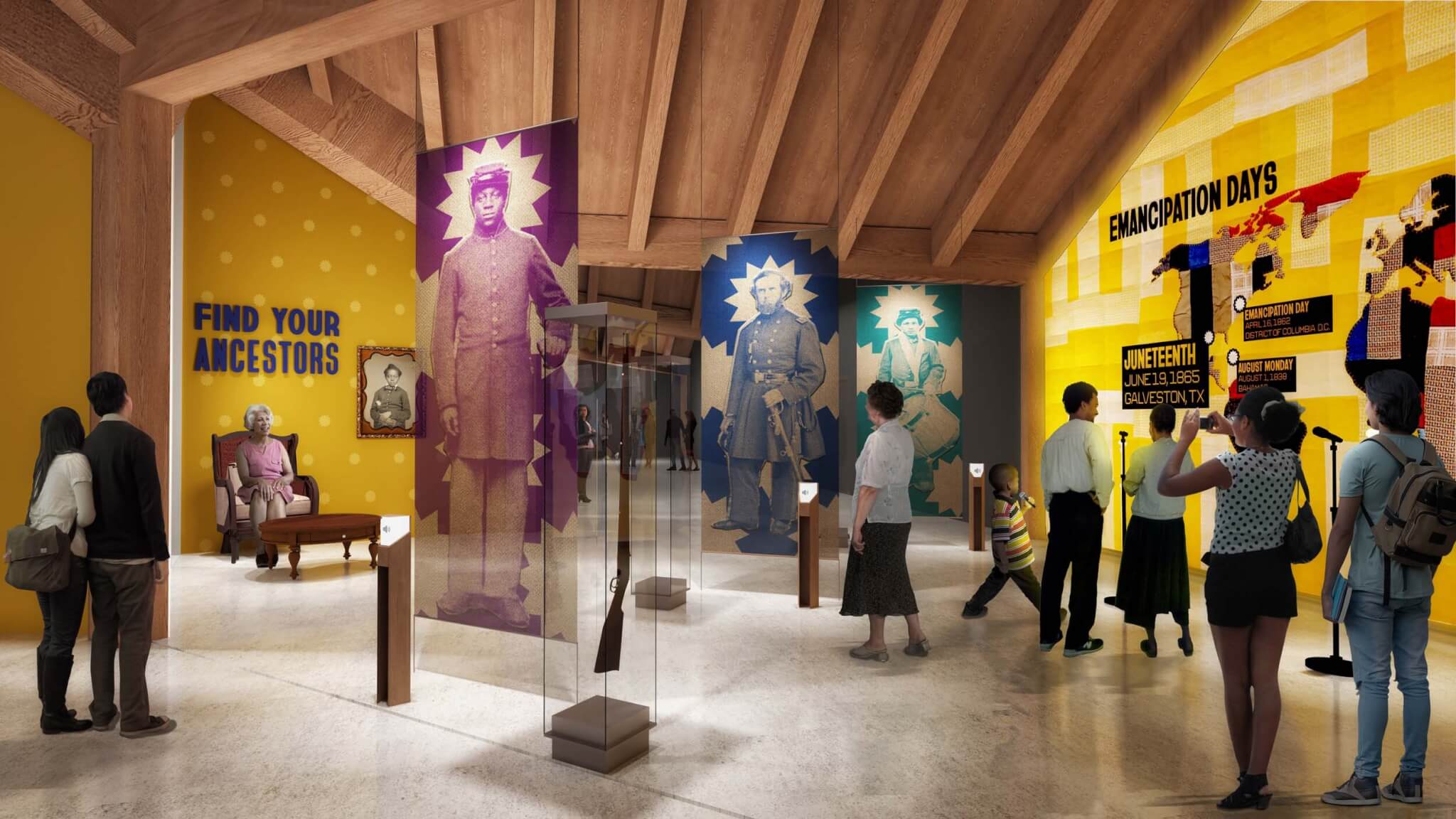As Opal Lee, a leading activist considered the “Grandmother of Juneteenth,” celebrates her 98th birthday this week, the National Juneteenth Museum, a project she is helping to shepherd, revealed new renderings of its exhibition spaces. Local Projects, an exhibition and media firm from New York, was tapped to lead the exhibition design efforts for the museum in the Historic Southside of Fort Worth, Texas. Local Projects joins Bjarke Ingels Group (BIG) and KAI Enterprises to realize Lee and the museum’s mission to commemorate the Juneteenth holiday and, more broadly, the emancipation of enslaved African Americans in the United States.
Design plans for the National Juneteenth Museum project were announced in 2022, one year after the day, which recognizes when enslaved people in Texas were made aware of their freedom, was made a national holiday. BIG was named the architect of the museum in 2022. Lee operated a humble museum on Juneteenth in Fort Worth, but this larger project shares the history with a greater audience. The museum was initially slated for construction at the intersection at Evans and Rosedale; in September it was announced its plans to relocate the project down the street where the Southside Community Center is currently located.

“The National Juneteenth Museum will be a beacon of hope and possibility as we contextualize history while also elevating resilience and joy,” said L’Rai Arthur-Mensah, executive account director at Local Projects. “This work is rooted in the visions of our ancestors and elders, and I am beyond grateful to be part of the team shepherding this immensely important museum forward.”
In renderings of the exhibition design shared by Local Project, the immersive nature of the display spaces are highlighted. As visitors walk through the galleries they will encounter interactive stations. Historic artifacts will be on view inside glass cases and banners and flags will hang from the wood ceiling. The information text on the walls will be accompanied by large, blown-up archival photographs, maps, and audio stories sharing timelines and landmark descriptions.

Wood appears to be a prominent material within the 50,000-square foot museum. Renderings from BIG and KAI of the building reveal walls and ceilings formed with the rustic material. The building’s massing will be formed by several gabled volumes that culminate at the building’s center, where a central courtyard is located. These pitched volumes recall the local vernacular and are another reference to African American history.

